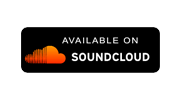CLICK TO SUBSCRIBE
If you say that you have this much traffic, what are these numbers telling you? Does it give you the correct information? Actually, what is important is to look at the numbers of people dropping off in the middle of reading your article, why they don't take the next step, why they never engage and some other factors. Actually these are the numbers that you need to analyze so that you will be able to convert more and get better results.
Podcast Highlights:
00:01 Prologue
01:10 Introduction of the topic
02:14 What is the difference between branded and non-branded traffic?
03:32 Where do you get this segmented information from? (...Why is it better to increase your non-branded?)
05:19 Why do you need to dig deeper and understand the numbers that you get? (...What are those statistics and user sessions that you need to track and analyze?)
08:06 Invitation to get help in analyzing your numbers.
08:52 End
Resources:
The SEOLeverage Consulting - https://seoleverage.com/seo-consulting/
Digging Deeper into Your Numbers
When it comes to digital marketing, a lot of emphasis is placed on getting people to click through to your site and landing page. While that’s certainly important, it’s not the only metric you should be focused on.
Once users are on your website, you need to convert them into leads or customers. And the best way to do that is to understand why they’re dropping off in the middle of reading or why they don’t take the next step.
Table of Contents
Branded Traffic Vs. Non-Branded Traffic
Everyone perhaps knows that traffic is the lifeblood of a website. Without traffic, a website is little more than an online ghost town. However, not all traffic is created equal.
If somebody searches for your brand or founder’s name, they already know which page and site to find. You don’t need an SEO campaign to rank well on Google search results. However, when people type in your brand name, these will be part of the organic traffic you’re looking at.
How to identify organic traffic
If 1000 people visit from organic searches, it’s important to understand how much of this is branded and non-branded traffic. In other words: it’s the percentage that looked at ads when they clicked through.
At SEOLeverage™️, they track their campaigns’ performance based on branded and non-branded traffic using Google Search Console. This way, it’s easy for Gert’s team to see how different groups respond to make changes if needed.
Why is It Better to Increase Non-branded Than Branded Traffic?
Sure, branded keywords are essential. But if you want to reach a broad audience, you also need to focus on increasing your non-branded traffic.
Remember, the more non-branded traffic your site gets, the better. You’ll see with SEO long term that the non-branded traffic goes up.
In a nutshell, this could mean that:
- People are coming in with terms you didn’t even know about or don’t contain your brand name.
- They are exploring new information on your page, expanding it for those searches.
- You increase your brand awareness.
- You grow your audience, your business as well as revenue.
At the same time, you can use different channels, like PR campaigns and social media ads, to help your brand get more exposure. According to Gert, not all organic traffic is from SEO, but these are people who search your brand name to find your website.
Why Do You Need to Dig Deeper and Understand the Numbers?
We all know that a number is not just a number. You have to dig deeper and really understand what’s happening.
What if your website only had a 10% conversion rate? Would you still believe that most people don’t want to take the next step?
If this is the case, it’s because of these reasons:
- First, it’s not the topic or website they expect.
- Secondly, your page is unreliable as they can’t find what they were looking for.
- Lastly, they find what they are looking for but don’t want anything else.
Generally, you need to dig deeper to know what needs to be part of your conversion statistics and what’s not. If a group isn’t engaged enough, then it’s best to split them up or spread out.
Takeaway
Overall, what you need is to analyze user sessions. Perhaps, track those exploring who check out your contact page or about page and those who are filling in a form and don’t.
Once you are clear on the data, you need to dig deeper and see what is coming together that ultimately builds up to the entire picture. Because otherwise, you can’t convert the data analysis into an actionable step. Or even you’re going down the wrong rabbit hole.
Get Help in Analyzing Your Numbers
If you want help with this, head over to SEOLeverage™️.
Gert’s team has amazing support from SEO to link builders and their own app. SEOLeverage prepares the numbers and outlines the exact action steps you need.
It’s not important to know everything about SEO to be successful. However, it’s more important to understand why certain things deserve your attention and your time.
Connect with Gert Mellak:
Email: [email protected]












